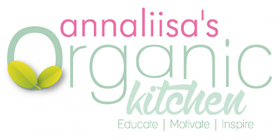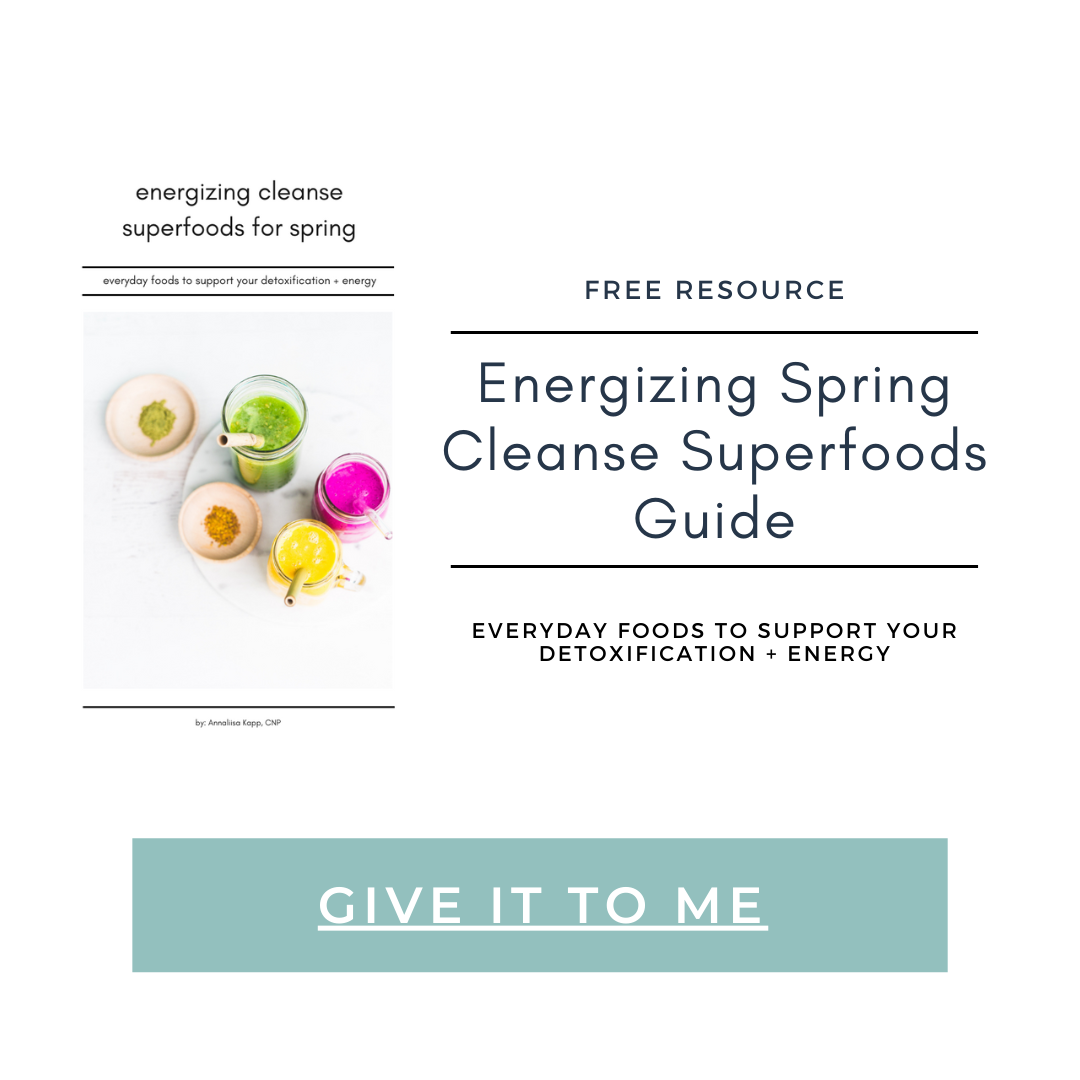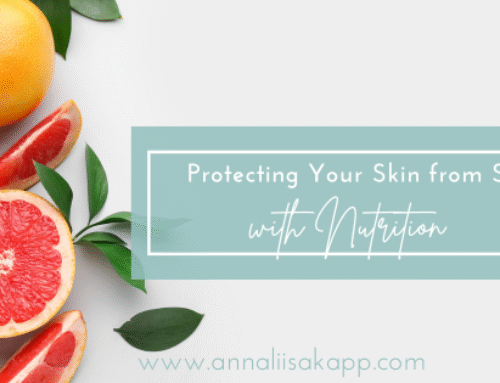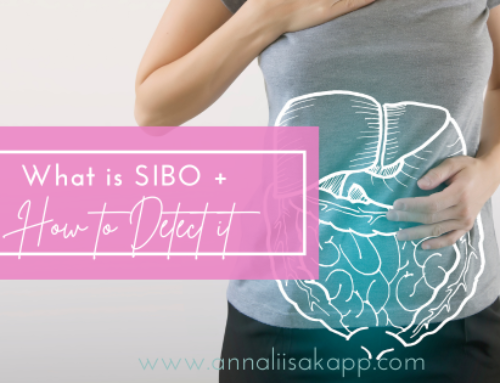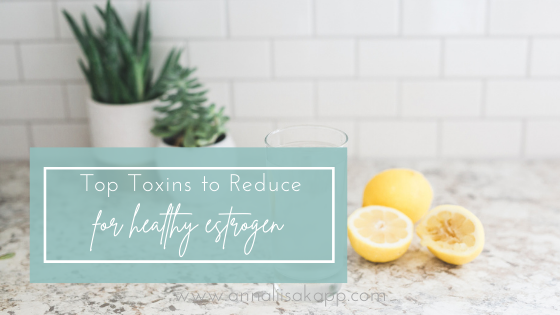
.
Now that I’ve hit the big 40, I’m becoming much more aware of my hormonal health.
Once you start to experience the shift that comes with perimenopause, it really becomes clear just how much hormones impact our health and how we feel on a day to day basis.
Today I want to share some important info around estrogen & the toxins that can really offset your hormonal health.
When it comes to estrogen in particular, problems start to arise when our estrogen levels are too high in comparison to progesterone, called estrogen dominance. This is not really problem with your body making too much estrogen, as it may sound, but rather the delicate balance between estrogen & progesterone. Meaning that you can actually have really low levels of estrogen, and still experience estrogen dominance.
.
Here are some conditions that are associated with estrogen imbalance:
- fibrocystic breasts
- uterine fibroids
- ovarian cysts
- PMS
- endometriosis
- polycystic ovarian syndrome
- hypothyroidism
- breast cancer
- hot flashes
- infertility
- depression
- menstrual irregularities (especially heavy bleeding)
- headaches
Many things can contribute to an estrogen dominant condition, like stress & diet, but today I want to focus on specific toxins that can cause problems.
These are a class of toxins called endocrine disruptors and include xenoestrogens, which are man-made chemicals that mimic the effects of natural estrogens in the body and can therefore cause hormone disruption. They not only disrupt estrogen, but have a significant impact on fertility for both men and women, and impact child development.
As our body metabolizes estrogen, which primarily happens in the liver, it’s detoxified through phase I & II, and then excreted through the urine & stool. Through this process, estrogens are converted into either healthy metabolites (C2) or the more carcinogenic forms (C4 & 16). The more harmful pathways (C4 & 16) are activated by xenoestrogens, poor dietary choices & lifestyle factors. As toxins accumulate in the body, our liver function can decline, which can result in poor toxin filtration and higher estrogen concentrations in the blood.
This is why we want to reduce the amount of toxins coming into our body & enhance our elimination pathways.
.
Here are 4 Hormone Disrupting Toxins to Avoid:
.
1. Bisphenol-A (BPA)
Perhaps the most infamous toxins, used to harden plastics & epoxy resin. These can be found in food & water containers, linings of canned food, cell phone cases, eyeglasses, & safety equipment. These plastics break down in environments where they are heated, frozen, or are washed with a strong detergent.
To avoid this toxin: use glass or stainless steel water bottles + food containers, avoid putting plastic containers in the microwave or freezer, and try to avoid plastics with number #7 on the recycling label. Purchase canned foods that indicate BPA free lining, especially when buying acidic foods such as tomatoes.
.
2. Phthalates
This chemical is used to make plastics, such as PVC, more flexible & resilient. They are found in plastic toys, food packaging, hoses, raincoats, shower curtains, lubricants, detergent, nail polish, hair spray, and shampoo.
To avoid this toxin: use natural beauty products, detergents, and shampoos (look for the phthalate free label and scan for additives like DEPH, DINP, DIDP, DBP, DnOP, and DnHP), & avoid toys made of plastic. Try to purchase wood & fabric toys.
.
3. Dioxin
Dioxins are called persistent organic pollutants (POPs), meaning they take a long time to break down once they are in the environment. Dioxins are not produced, but rather contaminants formed during the production of some chlorinated organic compounds. These chemicals are released into the air from industrial waste, smoking cigarettes, burning trash, forest fires, in the processing of pesticides & herbicides, and bleaching of paper & pulp. Dioxins can be found in feminine hygiene products like tampons. We ingest dioxin through consuming unfiltered water and eating high fatty tissue animal products.
To avoid this toxin: drink filtered water, eat organic whenever possible (and/or use the clean fifteen/dirty dozen list), and use dioxin free natural feminine products.
.
4. Parabens
Parabens are mostly used in cosmetics and personal care products as a preservative and fragrance. An estimated 75-80% of cosmetics contain parabens. Found in makeup, soaps, body washes, shampoos, and moisturizers, including those marketed toward babies and children.
To avoid this toxin: Stay away from beauty products and personal care products with ‘paraben’ in the ingredient list, as well as benzoic acid and propylester. Use products with fewer ingredients and natural preservatives like vitamin E.
.
How to reduce your toxin load
The next steps are to support your body’s detoxification processes with daily stress management, specific foods, herbs, hydration, and fibre that binds to toxins & helps facilitate bowel movements. Your body detoxes daily on its own, however, when there are more toxins coming in than it can handle and the detox pathways are not supported or are compromised, toxins start to build up in our fat cells.
This is where we start to see problems such as PMS symptoms, more headaches, digestive issues, fatigue, brain fog, and skin problems. Alcohol, highly processed foods, and foods that are considered inflammatory aggravate the symptoms further, as does chronic stress.
Adding in certain nutrients, such as those found in cruciferous vegetables, as well as chlorophyll rich foods, help to properly convert toxins and assists in elimination, and metabolize estrogen down the healthier pathway. For more on these foods, grab your Top Spring Cleanse Superfoods Guide below.
